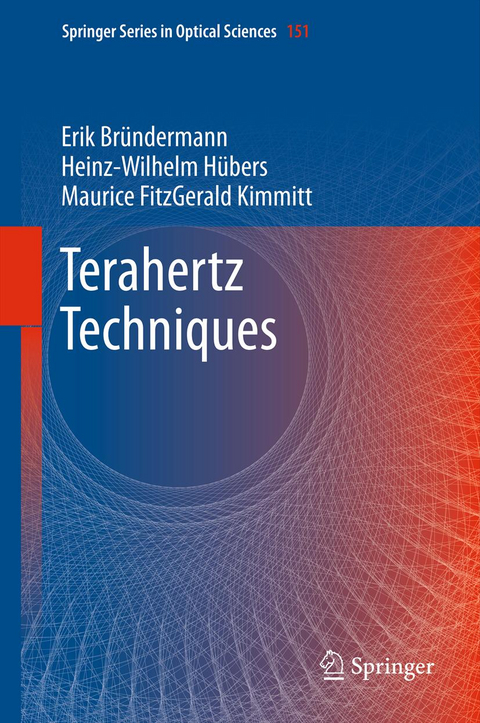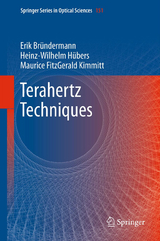Terahertz Techniques
Springer Berlin (Verlag)
978-3-642-02591-4 (ISBN)
Erik Bründermann and Heinz-Wilhelm Hübers met in 1986 at the Universität Bonn while studying physics, mathematics, and astronomy; and physics and medicine, respectively. In 1991, they both received diploma degrees in different areas of THz technology while working at the Max-Planck-Institut für Radioastronomie (MPIfR) within the group of Hans-Peter Röser. Since Maurice Kimmitt became associated with their research efforts at the MPIfR in 1990, they have shared a longstanding appreciation of each other and become the firmest of friends both inside and outside the laboratory. Erik Bründermann received a Dr. rer. nat. degree in physics and mineralogy in 1994 while working at the MPIfR, and then he joined the Deutsches Zentrum für Luft- und Raumfahrt (DLR, German Aerospace Center) in Berlin. In 1997, he was awarded a Feodor Lynen-fellowship of the Alexander von Humboldt-foundation, which took him to the Lawrence Berkeley National Laboratory and the Center for Particle Astrophysics. There, together with his host, Eugene E. Haller, he filed a patent on Ge and Si THz lasers. After 2 years in the USA as a visiting researcher, he became a member of the Ruhr-Universität Bochum (RUB), currently as permanent staff scientist serving also as technical advisor to the Applied Competence Cluster (ACC) THz at RUB. His research interests are in physics, mathematics, life science, and technology, spanning the entire spectral range from the THz region to the visible. Within the faculty of chemistry and biochemistry, he developed THz techniques for applications, especially for liquid samples in living conditions. Due to his interest in hyperspectral, multimodal, and multidimensional imaging, he initiated the development of chemical nanoscopes at RUB, which are used for nanoscale objects, molecules, and living cells. For his contribution to the development of a combined microscopy method, he received an Innovation Prize of RUB in 2007. Teaching is an integral part of his daily life, having taught countless students at all levels of education. He designed hands-on experiments ranging from those suitable for second year students up to large-scale research experiments such as a chemical nanoscope at the synchrotron ANKA. He has received several Japanese Center of Excellence awards at the National Institute of Communication and Technology (NICT, Tokyo) and was elected as Honorable Guest Professor at Shizuoka University in 2009. He serves on a yearly basis as a visiting guest professor at the Department of Nanovision Technology and the Graduate School of Science and Technology, hosted by Norihisa Hiromoto at the Hamamatsu Campus. He is a lifetime member of the Optical Society of America. In 2010, he initiated the regional group "Ruhrgebiet" of the German Humboldt-Club supported by the Alexander von Humboldt-foundation and, as a speaker for this group, he fostered multilateral and multicultural exchanges between scientists across faculties and disciplines.
Introduction.- Optical Principles at THz Frequencies.- Optical Components.- Sources.- Detectors.- Spectroscopic Methods.- Imaging.- Examples of Experiments.
| Erscheint lt. Verlag | 19.4.2012 |
|---|---|
| Reihe/Serie | Springer Series in Optical Sciences |
| Zusatzinfo | XXII, 386 p. |
| Verlagsort | Berlin |
| Sprache | englisch |
| Maße | 155 x 235 mm |
| Gewicht | 745 g |
| Themenwelt | Naturwissenschaften ► Physik / Astronomie ► Optik |
| Technik ► Elektrotechnik / Energietechnik | |
| Schlagworte | far-infrared • Optical Technology • Terahertz |
| ISBN-10 | 3-642-02591-9 / 3642025919 |
| ISBN-13 | 978-3-642-02591-4 / 9783642025914 |
| Zustand | Neuware |
| Haben Sie eine Frage zum Produkt? |
aus dem Bereich




